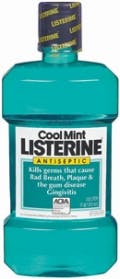Listerine discusses research regarding essential oils and biofilm kill
The lead researcher on a study of essential oils ingredients in Listerine Antiseptic mouth rinse shared additional details about the study with DentistryIQ.com.
Danette Ricci-Nittel, a microbiologist with the Johnson & Johnson Healthcare Products Division at McNEIL-PPC, Inc., discussed the results of the study, which was also presented at the March 2012 American Association for Dental Research (AADR) meeting.The study’s data suggested that the essential oils found in Listerine Antiseptic mouthrinse accomplishes deeper penetration via live/dead stain and exhibits superior biofilm kill in the mouth vs. competitive mouth rinses that contain cetylpyridinium chloride (CPC) or chlorhexadine (CHX). The abstract of the study presented at the AADR meeting can be viewed here.Ricci-Nittel told DentistryIQ.com, “In the first laboratory study, biofilm was grown statically for 48 hours. It was then subjected to a one, 30-second treatment rinse. The data from this assay showed that the essential oils found in Listerine Antiseptic exhibit deeper penetration via live/dead stain and superior biofilm kill in the mouth versus CPC and CHX.”She added that a separate extended laboratory study consisted of biofilms grown under flow conditions.“Biofilms were grown over 60 hours and were subjected to twice-daily treatments over the duration of those 60 hours (with five hours between treatments),” she said. “These results indicated that the essential oils found in Listerine Antiseptic exhibited deeper penetration via live/dead stain and biofilm kill to CPC and showed parity in biofilm penetration to CHX.”In addition to the AADR presentation, the company also released a related video. Ricci-Nittel encouraged dental professionals to view the mechanism-of-action information.“These lab studies demonstrate that Listerine Antiseptic is able to penetrate the plaque biofilm better than other mouthrinses, further supporting the mechanism of essential oils to control plaque and gingivitis,” she said.She said the study utilized established visual methodology such as confocal laser microscopy.“We were able to take it a step further in enhancing our messaging by designing and implementing new biofilm models through the evaluation of new dye combinations, both which improved stain ability and resolution and showed that Listerine Antiseptic exhibited deeper penetration.”



